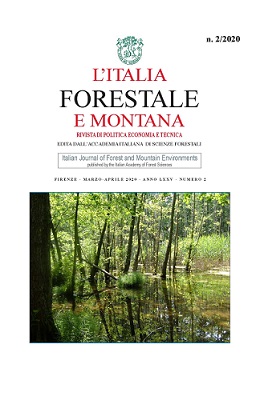Published 2020-04-30
Keywords
- forests,
- environmental services,
- financial aid
Copyright (c) 2020 Italian Journal of Forest and Mountain Environments

This work is licensed under a Creative Commons Attribution-NonCommercial 4.0 International License.
Abstract
Since silviculture was first introduced, the “economic value” of forest stands has been determined by timber production. Despite the fact that, in the last few decades, the concept of forest ecosystem “multi-functionality” has emerged - a concept that recognizes the multiple services and benefits that the community can benefit from - still, forest stands’ economic value is exclusively determined by their productive function. This concept is also at the root of the governing laws in the forestry sector of our country. A substantial legal and regulatory contribution to overcome the exclusive “productive” considerations of wooded formations followed the Constitutional Court’s ruling 105/2008 stating that forest stands are both a “patrimonial asset” (which its owner can benefit from) and an “environmental asset” (referring to multiple environmental functions exercised for the benefit of society as a whole). In light of this, valuing land only by its timber production sounds outdated. It seems rather appropriate and necessary, from a cultural point of view, that the community supplies wooded land owners - however the type of land - with financial remuneration as acknowledgement for the services and benefits provided by “their” wooded land. This could be obtained by granting owners a government “tax credit”. Different sums are proposed for each forest stand: those subject to management plans and those that are not. Assuming a sum of 100 and 50 euros per hectare for the aforementioned cases, a tax credit would be granted to landowners estimated at € 400 million per year.

